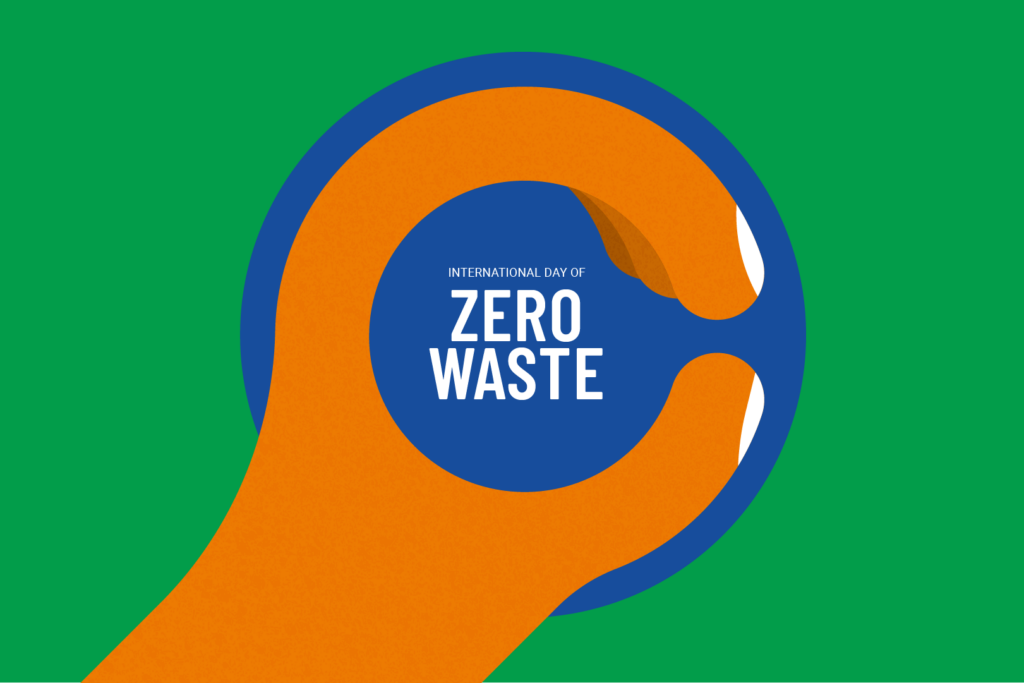The Zero Waste Day will take place in a few days. From HORUS we are more than aware of the importance of waste pollution for urban health including one of our pillar of actions around Greenspaces. Thus, we want to echo the call made on 14 December 2022, by the United Nations General Assembly, who adopted a resolution at its seventy-seventh session to proclaim 30 March as International Day of Zero Waste, to be observed annually. The International Day of Zero Waste encourages sustainable production and consumption habits and aims at increasing awareness of how zero-waste projects accelerate the 2030 Agenda for Sustainable Development.
The United Nations Human Settlements Programme (UN-Habitat) and the United Nations Environment Programme (UNEP) facilitate the observance of the Day.
Governments, businesses, individuals and more must embrace zero waste to overcome the waste pollution crisis. UN-Habitat and its partners, including UNEP, regularly update the science on waste pollution and research new solutions. Browse the latest reports below to find out everything you need to know to #BeatWastePollution.
- Rescuing SDG 11 for a resilient urban planet (UN-Habitat, 2023)
- Towards Zero Waste: A Catalyst for delivering the Sustainable Development Goals (UNEP, 2023)
- Leaving no one behind (UN-Habitat, 2022)
As for HORUS, we think that this polution harms vulnerable groups in urban enviroments due to the following causes:
1. Waste pollution damages health
Waste pollution poses huge risks to people’s health and wellbeing: the toxic fumes that are released when rubbish is burnt can lead to serious respiratory problems. People would burn waste in the open since there were no other means of disposal. This would cause children to cough and get sick, especially when soft drink bottles were burnt along with other plastics, causing thick, dense smoke.
2. Plastic pollution causes flooding disasters
As well as causing disease, when plastic or other sourced pollution blocks waterways it can also exacerbate flooding which can lead to huge disasters and loss of life. Many urban communities across the world experience regular, flash flooding on a devastating scale – even after just a small amount of rainfall – as the plastic dumped in rivers and drains means excess water has nowhere to go.
3. Waste pollution threatens livelihoods
Flooding clearly threatens people’s ability to earn a living, but there are other ways waste pollution can harm their livelihoods too. Waste pollution poses a significant hazard to animals: ingestion, choking and entanglement are a serious risk. Studies have found that in some low- and middle-income countries, up to a third of cattle and half of the goat population have consumed significant amounts of plastic waste which they have mistaken for food. Fish are similarly affected: for those who rely on their livestock and fishing for their income, this is particularly devastating.
Waste is contributing to the climate emergency in two main ways. Firstly, for example on plastic, the oil and gas used in its production releases carbon into the atmosphere, adding to global warming– the plastic industry is the fastest growing source of industrial greenhouse gas emissions in the world. And when waste is burnt on street corners, in backyards and at open dumpsites, this releases dangerous pollutants back into the atmosphere too.
We know that the climate crisis is impacting those living in poverty the worst – as failed rainy seasons and devastating weather events are destroying incomes and threatening lives in lower-income countries. The more waste, with a special focus on plastics, we produce, consume, dump and burn, the worse the climate crisis will become, and the more people in poverty will suffer the consequences.
5. and Plastic and its wastes is a trap
Plastic pollution isn’t just a threat, it’s also a trap. People living in poverty often find themselves stuck in a vicious cycle, where plastic packaging seems essential to daily life. For example, it preserves and protects food, reducing food waste, and enables access to medicine and clean drinking water. But there are many problematic single-use plastics being distributed in low- and middle-income countries. Plastic sachets are one of the most prominent examples. These are used for single portions of goods like coffee, washing powder and even water. While they can make products more accessible to families who cannot afford standard sizes of these products, they are a huge contributor to the waste crisis.
More info to be found here: https://unhabitat.org/international-day-of-zero-waste


